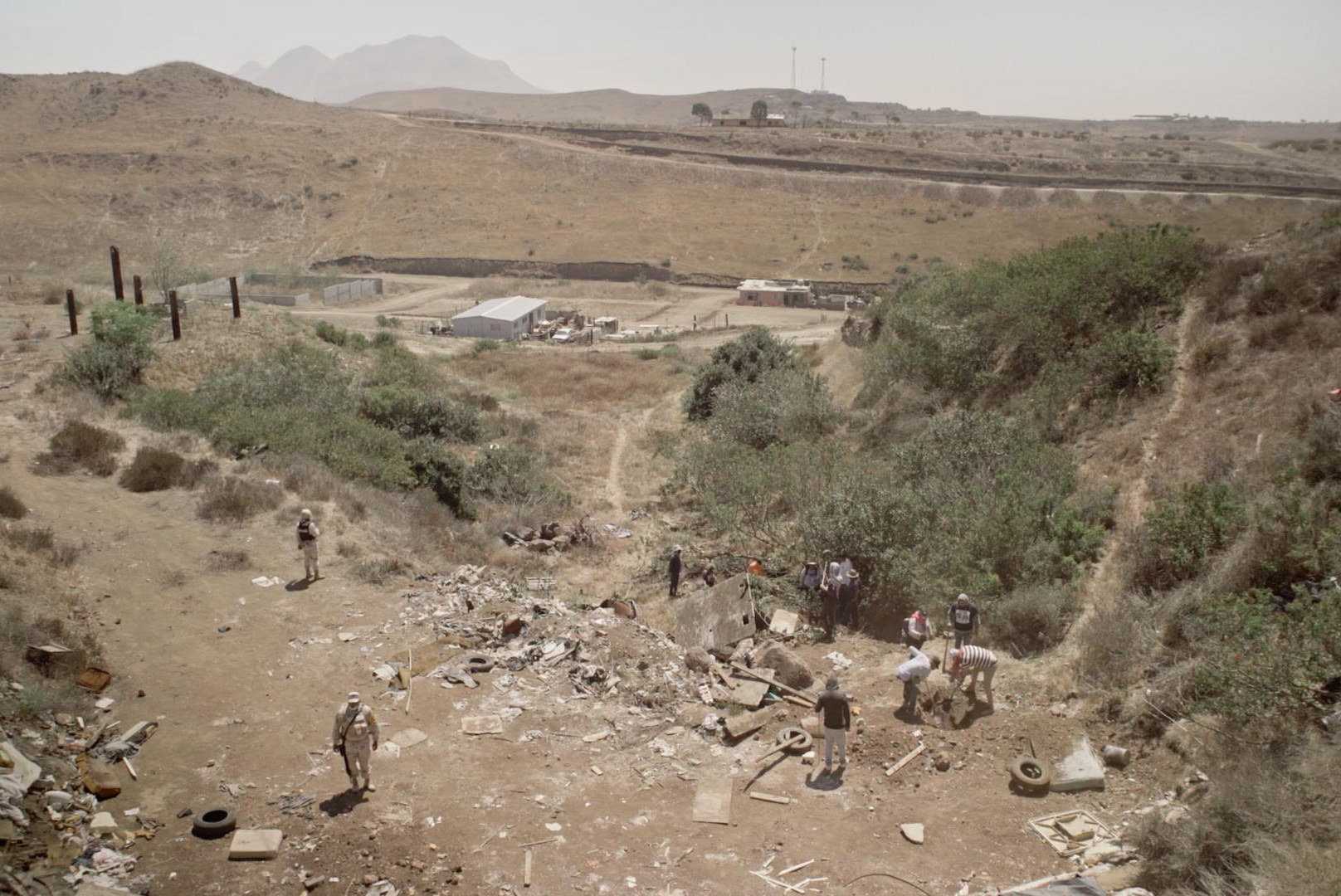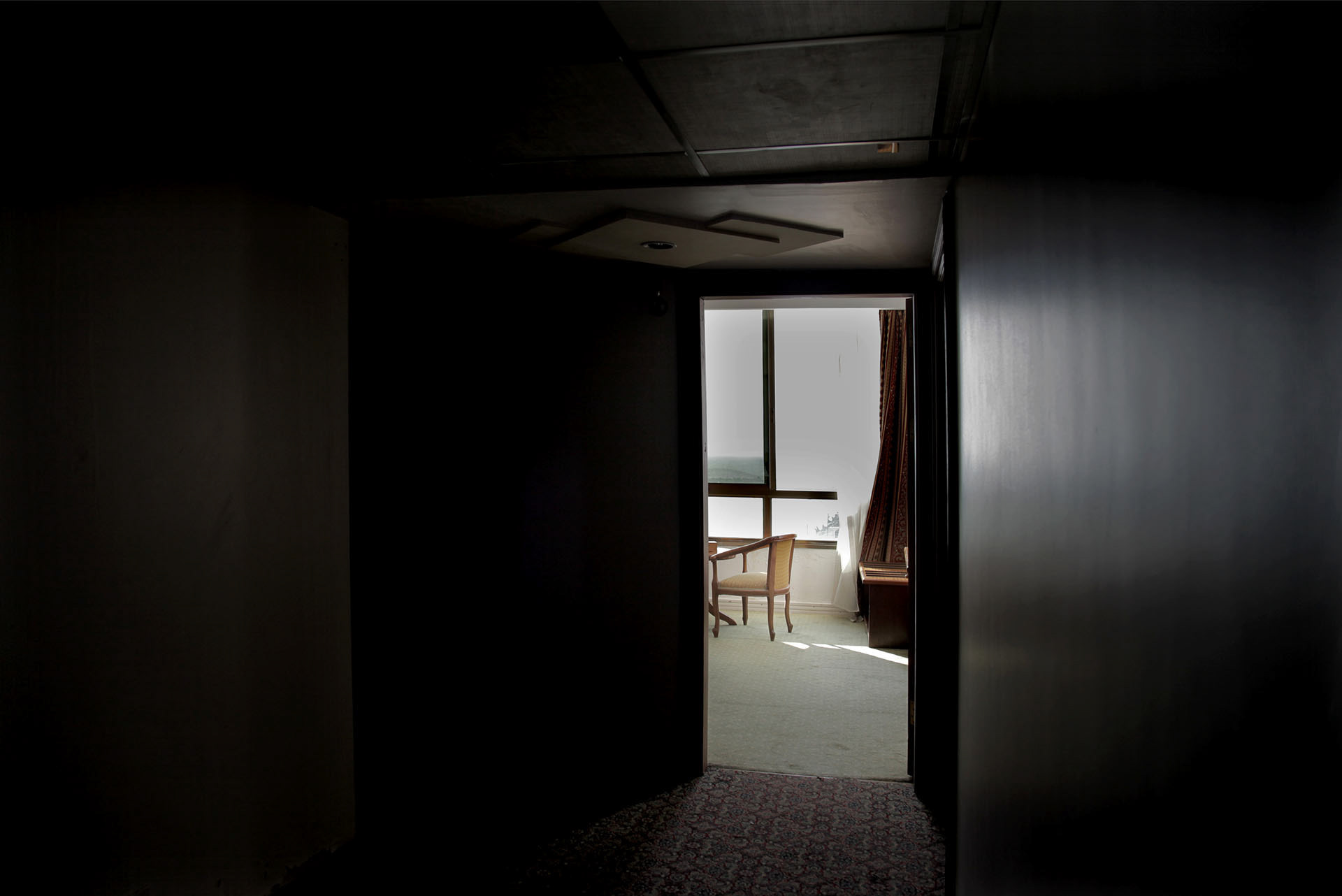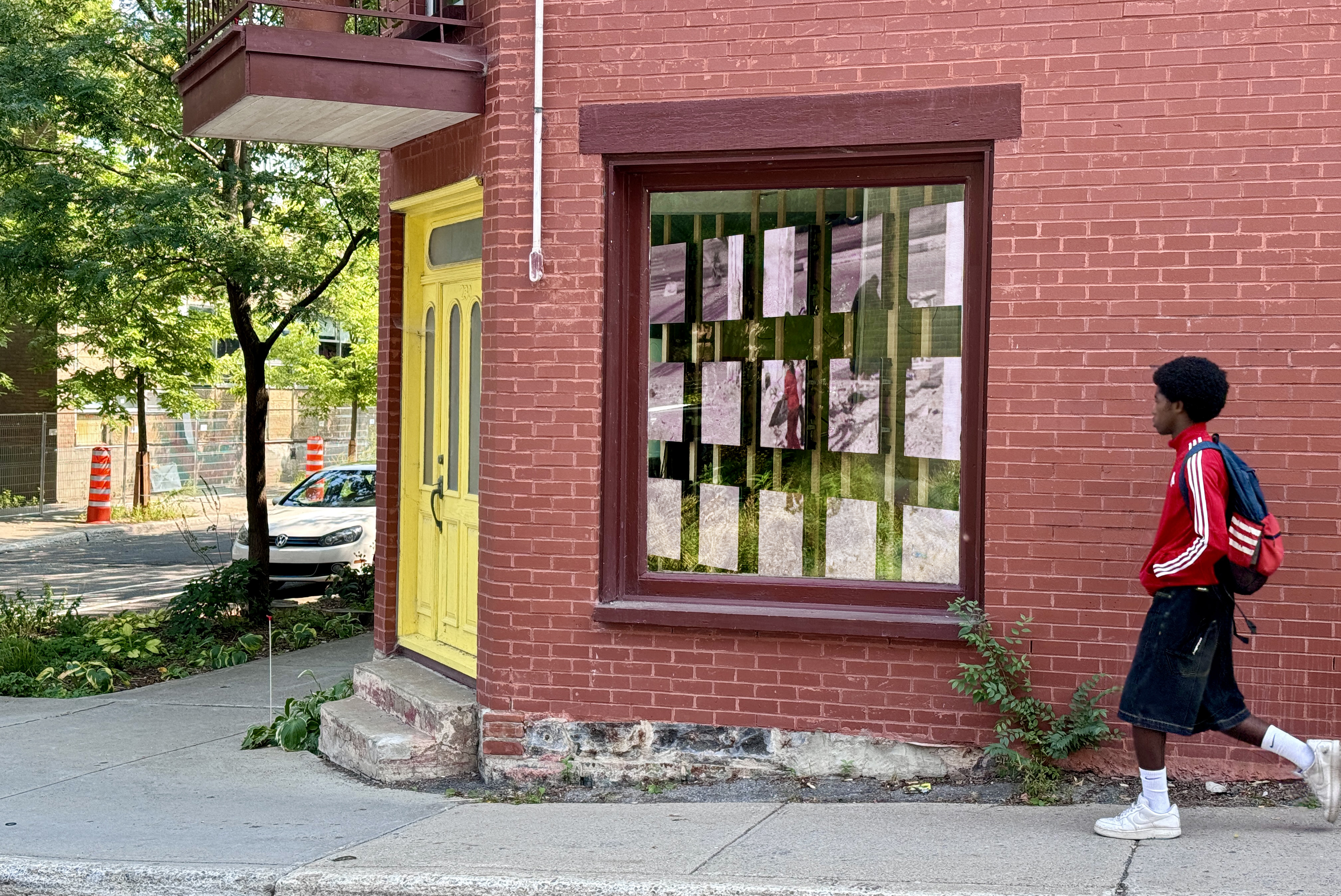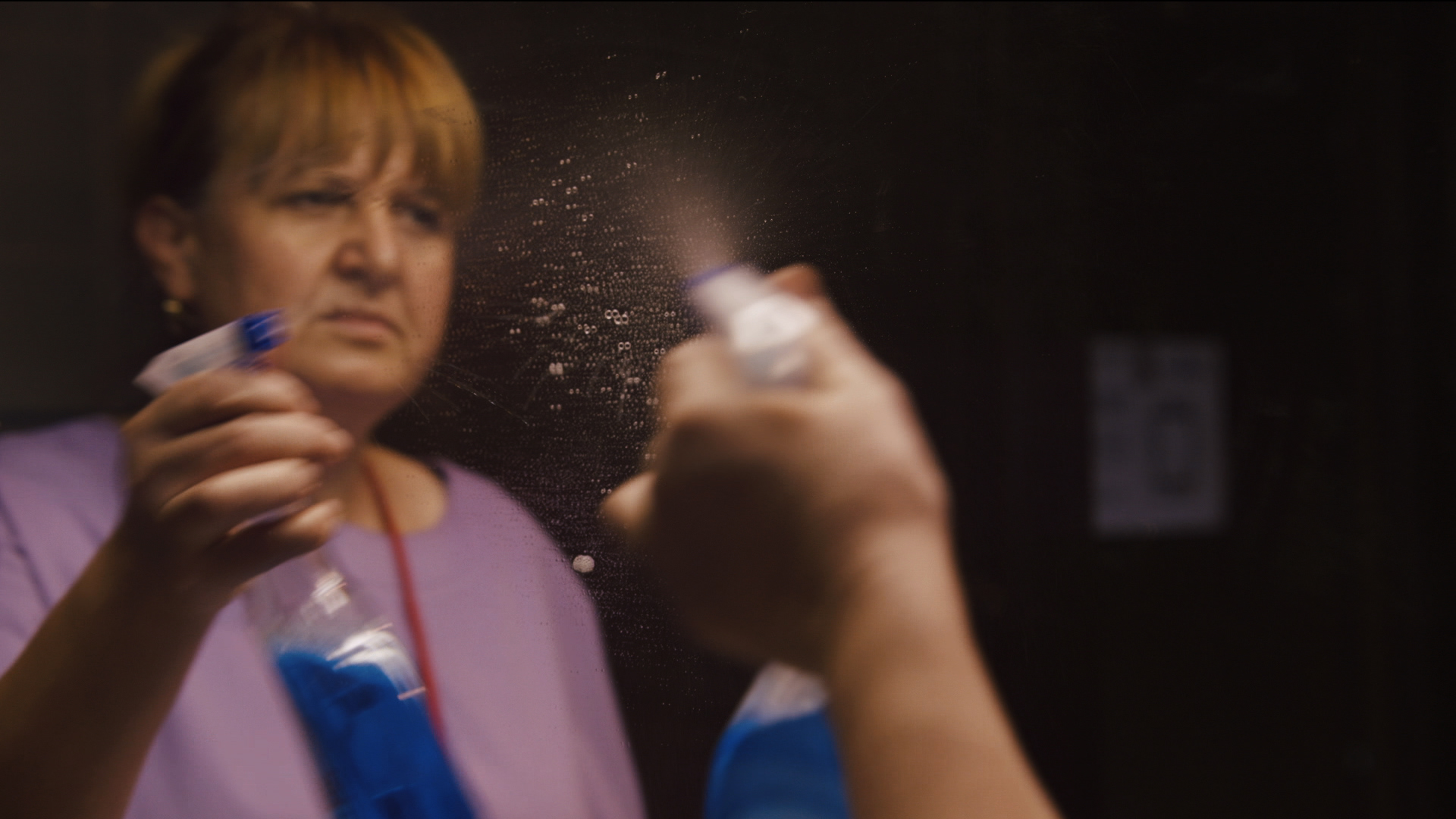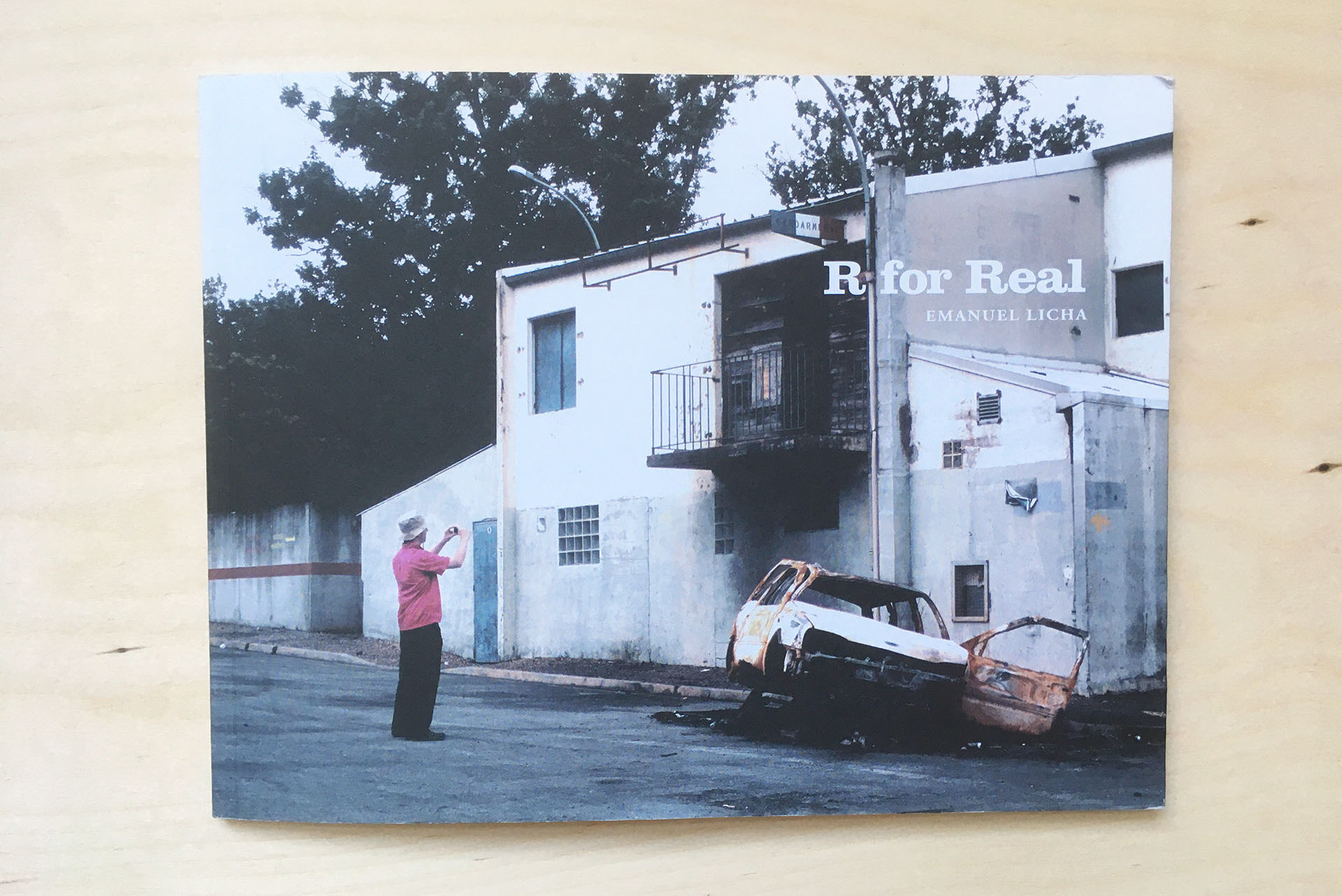Spirale. Special issue no.2, 2018.
Women and Mass Violence
Although all groups of people are affected by large-scale violence, women experience it in specific ways. We need only think of the systematic murders of Indigenous women and girls in North America and Latin America, or of the many armed conflicts (in Syria, Libya, Myanmar, and others) where rape is used as a weapon of war. These two phenomena may also overlap: one of the first cases of feminicide to be named and documented as such in the Americas was that of Mayan women during the Guatemalan civil war in the early 1980s. Women are not only victims of mass violence, however, they are also the first to speak out, denounce, and oppose it.
This second Spirale special issue brings together articles and visual projects in which gender-related mass violence is described and analyzed. Contributors seek to raise awareness of the way in which this violence is represented, especially since patriarchy, colonialism, political interests and official incompetence often render it invisible and inaudible.
This publication is part of the Topographies of Mass Violence project, organized by François LeTourneux, Emanuel Licha and Jean-Philippe Uzel, with the collaboration of Véronique Leblanc. All the texts ara available online on the main project's website: https://topographies-violence.org/en/events/spirale
Credits
Texts by: Emanuel Licha, Christiane Pelchat, Sandrine Ricci, Élisabeth Vallet, Leanne Betasamosake Simpson, Natasha Kanapé Fontaine, Niki Little Becca Taylor, Syvie Paré, Caroline Monnet, Agustina Isidori, Meky Ottawa, Nahka Bertrand, Julie Burneau, Lucía Vergel, Tina Lam
Guest editors: Nadia Myre and Jean-Philippe Uzel
Editorial coordinator: Véronique Leblanc
Administrative coordinators: Sébastien Dulude and Zéa Beaulieu April
Cover: Teresa Margolles
Guest editors: Nadia Myre and Jean-Philippe Uzel
Editorial coordinator: Véronique Leblanc
Administrative coordinators: Sébastien Dulude and Zéa Beaulieu April
Cover: Teresa Margolles
Spirale. Hors série no.2, 2018.
Femmes et violence de masse
Si tous les groupes humains sont touchés par la violence à grande échelle, les femmes la subissent sous des formes spécifiques, comme en témoignent les assassinats systémiques des femmes et des filles autochtones en Amérique du Nord et en Amérique latine, ou encore les nombreux conflits armés (Syrie, Lybie, Birmanie, entre autres) dans lesquels le viol est érigé en arme de guerre. Les deux phénomènes peuvent d’ailleurs se recouper puisque l’un des tout premiers féminicides à avoir été qualifié et documenté comme tel en Amérique est celui ayant été perpétré contre les femmes mayas durant la guerre civile guatémaltèque au début des années 1980. Cependant, les femmes ne sont pas seulement les victimes de la violence de masse, puisqu’elles sont aussi les premières à témoigner et dénoncer pour faire barrage à cette violence.
Ce deuxième numéro hors-série de Spirale regroupe des articles et des projets visuels qui décrivent et analysent la violence de masse liée au genre. Il s’agit de réfléchir sur la manière de représenter cette violence et d’en témoigner, d’autant plus qu’elle est bien souvent rendue invisible et inaudible par le patriarcat, le colonialisme, les intérêts politiques en présence ou l’impéritie de l’État.
Cette publication fait partie du projet Topographies de la violence de masse organisé par François LeTourneux, Emanuel Licha et Jean-Philippe Uzel, avec la collaboration de Véronique Leblanc.
Les traductions anglaises des textes sont disponibles sur le site du projet: https://topographies-violence.org/en/events/spirale
Crédits
Textes: Emanuel Licha, Christiane Pelchat, Sandrine Ricci, Élisabeth Vallet, Leanne Betasamosake Simpson, Natasha Kanapé Fontaine, Niki Little Becca Taylor, Syvie Paré, Caroline Monnet, Agustina Isidori, Meky Ottawa, Nahka Bertrand, Julie Burneau, Lucía Vergel, Tina Lam
Direction de la publication: Nadia Myre et Jean-Philippe Uzel
Coordination éditoriale: Véronique Leblanc
Coordination administrative: Sébastien Dulude and Zéa Beaulieu April
Couverture: Teresa Margolles
Direction de la publication: Nadia Myre et Jean-Philippe Uzel
Coordination éditoriale: Véronique Leblanc
Coordination administrative: Sébastien Dulude and Zéa Beaulieu April
Couverture: Teresa Margolles
English translation
Topographies of Mass Violence: The Deviant Trajectories of Humanitarian Aid
Each iteration of a mass-violence phenomenon corresponds to specific places and objects that characterize and symbolize it. With the thousands of victims of the Syrian conflict, we associate, among other things, smashed residential buildings and bombed hospitals; with migrants trying to reach Europe, makeshift boats and perfunctory life jackets; with those making their way to the American border, border walls, arid landscapes, and empty water bottles; with genocides of Indigenous peoples, contaminated blankets, residential schools, and golf courses; with violence against African Americans, armed police officers and overpopulated prisons; with terrorist attacks, airliners and vehicles used as ramming weapons. But what places and objects would be characteristic of mass violence against women? This violence is taking place at such a scale, is so ubiquitous and has been so for such a long time, and intersects with so many other forms of violence among those listed above that it seems almost useless to try to locate it on the fine markings of a scale or to identify specific objects that embody it. “We have to follow the things themselves, for their meanings are inscribed in their forms, their uses, their trajectories,” wrote Arjun Appadurai in 1986. “It is only through the analysis of these trajectories that we can interpret the human interactions and calculations that enliven things.”
The analysis of the trajectory of spatial objects involved in mass-violence phenomena was the subject of two exhibitions presented simultaneously at the Musée d’art contemporain de Montréal, which were the starting point for the Topographies de la violence de masse project, of which this publication is part. Teresa Margolles’s exhibition Mundos highlighted certain objects that somehow gave materiality to the violence against women and transgender people in Mexico, whether it was by moving the remains from a house abandoned by the family of a dead woman, by recovering the neon lights from an old bar in Ciudad Juárez—the city where so many women were murdered—by photographing the ruins of dance floors in discotheques previously visited by transgender people who are now dead, or by archiving the wanted posters put up by the families of women who have disappeared. Margolles, taking on the role of medium, was able to make places and objects speak.What they had to tell us was frightening. My exhibition Et maintenant regardez cette machine looked at a range of different roles played by “war hotels” in the representation of conflicts. When a conflict breaks out, and when it is possible, international journalists swoop in to cover the event. They tend to gather in the same hotels to live and work. That is where they meet up with other protagonists of the conflict, thus endowing these places with a strategic function.[1]
During the different stages of Topographies de la violence de masse—exhibitions, day-long seminars, a conference, film screenings, and reading the report of the Truth and Reconciliation Commission of Canada—we wondered how seemingly innocuous spatial objects such as houses, schools, walls, trees, boats, clinics, cameras, and smartphones, to name just a few, could be transformed into dangerous tools, used against those whom they were supposed to help, even to the point of denying their very humanity. In parallel, we observed that in order to escape the polarization of the media between unrepresentability and spectacularization, a great number of artists and filmmakers become topographers by describing, recording, and portraying the traces of this violence in places that are steeped in it, directly or indirectly.
As part of my research on war hotels, I had identified this aspect of the instrumentation of conflict representation as another “power-knowledge” institution. Here, I was following the concept developed by Michel Foucault, who established close parallels between certain spatial objects and discourses related to power. In Archaeology of Power (2002), Foucault defined discourse as a communal opinion that emanates from a series of “statements,” which are not sourced exclusively in linguistics. In Discipline & Punish: The Birth of the Prison (1995), he wrote, “Surveillance is expressed in the architecture by innumerable petty mechanisms” that strengthen knowledge and, by implication, a certain form of productive power. Consistent with my research on the agency of war hotels as aid spaces, my current film project explores the 4×4 vehicles used in humanitarian missions and the aid that they help deliver. These vehicles are often painted white, signalling the possibility of assistance and of finding refuge. They transport representatives of expertise and skill, as well as equipment and medication. In this sense, they confer power upon those who drive them. The “all-terrain” nature of the vehicles enables them to reach remote zones, and their technical capacities create ways of being and acting: used as a tool, they produce means of action and ways of thinking. The 4x4s are objects and spaces that define distinctions between the privileged and the afflicted, between the helpers and the helped, between the powerful and the weak. The closed space of the car is a protected and mobile space for those who come and go, who are there with no obligation to be there or stay there.
Shipment of equipment for a Red Cross emergency mission. Red Cross Emergency Items catalogue.
Preparatory research for the film took me to Haiti, which I chose because it is the country hosting the largest number of non-governmental organizations (NGOs) in the world. Some Haitians even call their country, ironically, the “Republic of NGOs.” There, in February 2018, a scandal broke out involving management employees of the humanitarian organization Oxfam, who had hired Haitian sex workers for parties in their official villas during the aid mission following the earthquake of January 2010 that killed more than 230,000 people and left more than 1.5 million homeless. These actions were universally condemned. Oxfam, which was aware of them at the time they took place, was criticized for not reporting them to the local authorities, as prostitution is illegal in Haiti and international organizations are required to respect the laws of the countries in which they operate. Many people also commented that there was nothing new or surprising there, and that abusive sexual conduct by certain employees of humanitarian aid organizations was common, even systemic, and had been for many years (Khan,2018; Aziz, 2018). In the colonial era, it had been claimed that white men living in the tropics suffered from what CharlesWoodruff, an American army physician in the Philippines, called “tropical neurasthenia,” the symptoms of which included melancholy, alcoholism, paranoia, and sexual deviancies (Woodruff,1905). In other words, due to heat and humidity, cultural confusion, and lack of distractions, white men succumbed to the temptation of having sex with local women.
These habits developed in the colonies were maintained and adapted in the era of humanitarian aid. In 1995, a guide for humanitarian workers written by the United Nations Agency for Refugees (United Nations High Commissioner for Refugees, or UNHCR) recognized the involvement of international humanitarian workers in cases of sexual violence against refugee populations and noted that in many cases, sexual services had been required in exchange for assistance, food, or attribution of refugee status. My search for spatial objects that characterize violence against women therefore involved following humanitarian aid itself—which, in a complete reversal of expectations, is sometimes used to exploit rather than help the world’s most disadvantaged and vulnerable people.
In 2002, a report by the United Nations Office of Internal Oversight Services acknowledged the existence of a large-scale problem of sexual exploitation in West Africa, defined in the report as a situation in which an employee of an NGO or international humanitarian aid organization in a position of power uses this power to demand sexual services in exchange for goods, food, or services that refugees would otherwise have the right to receive free of charge. How can we fathom that exploitation of and violence toward women, including minors, can exist in parallel with humanitarian aid? This aid is deployed with major logistical assistance from organizations that—theoretically—hold universal human rights values at their core. Entities such as Oxfam and the UNHCR develop processes for reflecting on the ethics of intervention, the results of which are published year after year in guides and detailed reports (Rowlands, 2014). For instance, Oxfam has published 1,458 documents on the question of gender, 582 on issues of governance and citizenship, 471 on human rights, and 212 on inequalities. This plethora of publications helps to reinforce the impression of both the general public and accreditation bodies that these organizations are in complete control of the ethical process involved in their interactions with vulnerable populations. One can assume that such trust tends to reduce the level of vigilance that might otherwise make it possible to detect certain abusive and exploitative behaviours more quickly and effectively. It is therefore understandable why the Haitian government, when it withdrew Oxfam Great Britain’s NGO status on June 13, 2018, also announced that a bill was being prepared to authorize better oversight of the activities of NGOs working in the country.
Mechanisms for detecting and controlling sexual exploitation can be effective only with the full cooperation of international NGOs, which are mandated by privileged populations to provide aid to vulnerable ones. The former are responsible for ensuring that this mandate is respected on behalf of the latter. Therefore, they must receive the necessary information, and the external oversight mechanisms must function properly, so that results of internal inquiries are not quashed, as they were by Oxfam in Haiti. It is important for the media to ensure that NGOs are held responsible for their actions in their different missions in the field, within the legislative frameworks that vary from country to country. NGO workers’ continuous presence in what can be very dangerous territories makes them particularly important to journalists, who count on these contacts to organize the logistics of their travels and provide them with information for their reports (Meyer et al., 2018). In the early 2000s, when the United States invaded Iraq, there was strong criticism of the practice of embedding journalists[2]: because they were travelling with American troops, they were able to see only one aspect of the conflict and were totally dependent on the military for all aspects of daily life (transportation, provision of food and lodging, access to communications technologies). This proximity and dependence raised the fear that a sense of complicity would develop between soldiers and journalists and that the latter would be less rigorous in their reporting of the actions of the former. Similar questions should be asked about the relations between the media and international NGOs.
In contexts in which the rape of women is used as a weapon of war to terrorize and control populations, arriving in refugee camps should mean, for persecuted populations and for women in particular, the end of exploitation and the beginning of a return to a situation in which their physical and mental integrity is no longer threatened. The presence of humanitarian aid organizations in areas that have become lawless zones sometimes offers local populations their only hope for improving their living conditions, or even for survival. It is clear that this state of affairs places humanitarian workers in a position of power over disadvantaged populations. Abuses of power are so frequent that simply sanctioning the offending humanitarian workers is obviously not enough. The problem lies upstream, in the governance structures of these NGOs.[3]Because 79 percent of the activities of international NGOs are conducted in low- or middle-income countries and 66 percent of their leaders, a large majority of whom are men, are of European origin, it is urgent, even before subsidies to NGOs involved in sex scandals are cut,[4]that these organizations challenge their own governance structures, too many of which are run by white men. This will enable international NGOs to consistently apply their values of respect, equity, and equality in their field missions, and to ensure that the trajectory of the aid provided does not lead to more violence.
Translated by Käthe Roth
BIBLIOGRAPHY
Appadurai, Arjun, ed. (1986), The Social Life of Things: Commodities in Cultural Perspectives,Cambridge, Cambridge University Press.
Aziz, Shaista (2018), “As a Former Aid Worker, I’m Not Shocked by the Oxfam Revelations,”The Guardian,February 12, 2018.
Foucault, Michel (2002), Archaeology of Knowledge, Translated by A. M. Sheridan Smith, London and New York, Routledge. Originally published as L’archéologie du savoir(Paris: Gallimard, 1969).
Foucault, Michel (1995), Discipline and Punish: The Birth of the Prison, Translated by Alan Sheridan, New York, Random House. Originally published as Surveiller et punir: naissance de la prison(Paris: Gallimard, 1993).
Jarboe, Norma (2012), Charity Leaders 2012: Benchmarking the Participation of Women in the UK’s Largest Charities, U.K., WomenCount. https://womencountblog.files.wordpress.com/2016/03/women_count_report_2012.pdf.
Khan, Mishal S. (2018), “Oxfam: Sex Scandal or Governance Failure?,” The Lancet391 (10125), 1019–20.
Licha, Emanuel (2018), “On Re-enacting a Hotel Space,”Intermédialités,no28–29 (Fall 2017–Spring 2018). https://www.erudit.org/en/journals/im/2016-n28-29-im03201/1041089ar/.
Licha, Emanuel (2017), “Un hôtel de guerre est bien plus qu’un bâtiment, In Et maintenant regardez cette machine, Montreal, Musée d’art contemporain de Montréal, 73–78.
Meyer, Christoph O., Eric Sangar, and Eva Michaels (2018), “How Do Non-governmental Organizations Influence Media Coverage of Conflict? The Case of the Syrian Conflict, 2011–2014,” Media, War & Conflict 11 (1), 149–71.
United Nations (2002), Report of the Office of Internal Oversight Services on the Investigation into Sexual Exploitation of Refugees by Aid Workers in West Africa. http://www.un.org/news/dh/infocus/a-57-465.pdf.
Rowlands, Jo. (2014),Making the Impossible Possible: An Overview of Governance Programming in Fragile Contexts, Oxfam GB. https://policy-practice.oxfam.org.uk/publications/making-the-impossible-possible-an-overview-of-governance-programming-in-fragile-331984.
United Nations High Commissioner for Refugees (1995), Sexual Violence Against Refugees: Guidelines on Prevention and Response. http://www.unhcr.org/publications/operations/3b9cc26c4/sexual-violence-against-refugees-guidelines-prevention-response-unhcr.html.
Woodruff, Charles (1905), The Effects of Tropical Light on White Men, Rebman Company. https://archive.org/stream/cu31924029901208.
Aziz, Shaista (2018), “As a Former Aid Worker, I’m Not Shocked by the Oxfam Revelations,”The Guardian,February 12, 2018.
Foucault, Michel (2002), Archaeology of Knowledge, Translated by A. M. Sheridan Smith, London and New York, Routledge. Originally published as L’archéologie du savoir(Paris: Gallimard, 1969).
Foucault, Michel (1995), Discipline and Punish: The Birth of the Prison, Translated by Alan Sheridan, New York, Random House. Originally published as Surveiller et punir: naissance de la prison(Paris: Gallimard, 1993).
Jarboe, Norma (2012), Charity Leaders 2012: Benchmarking the Participation of Women in the UK’s Largest Charities, U.K., WomenCount. https://womencountblog.files.wordpress.com/2016/03/women_count_report_2012.pdf.
Khan, Mishal S. (2018), “Oxfam: Sex Scandal or Governance Failure?,” The Lancet391 (10125), 1019–20.
Licha, Emanuel (2018), “On Re-enacting a Hotel Space,”Intermédialités,no28–29 (Fall 2017–Spring 2018). https://www.erudit.org/en/journals/im/2016-n28-29-im03201/1041089ar/.
Licha, Emanuel (2017), “Un hôtel de guerre est bien plus qu’un bâtiment, In Et maintenant regardez cette machine, Montreal, Musée d’art contemporain de Montréal, 73–78.
Meyer, Christoph O., Eric Sangar, and Eva Michaels (2018), “How Do Non-governmental Organizations Influence Media Coverage of Conflict? The Case of the Syrian Conflict, 2011–2014,” Media, War & Conflict 11 (1), 149–71.
United Nations (2002), Report of the Office of Internal Oversight Services on the Investigation into Sexual Exploitation of Refugees by Aid Workers in West Africa. http://www.un.org/news/dh/infocus/a-57-465.pdf.
Rowlands, Jo. (2014),Making the Impossible Possible: An Overview of Governance Programming in Fragile Contexts, Oxfam GB. https://policy-practice.oxfam.org.uk/publications/making-the-impossible-possible-an-overview-of-governance-programming-in-fragile-331984.
United Nations High Commissioner for Refugees (1995), Sexual Violence Against Refugees: Guidelines on Prevention and Response. http://www.unhcr.org/publications/operations/3b9cc26c4/sexual-violence-against-refugees-guidelines-prevention-response-unhcr.html.
Woodruff, Charles (1905), The Effects of Tropical Light on White Men, Rebman Company. https://archive.org/stream/cu31924029901208.
[1] The presence of reporters in war hotels draws, in turn, other participants in the conflict—soldiers, militia members, politicians, humanitarian workers—who gather to meet, exchange information, plan, negotiate, give interviews, hold press conferences, sign peace accords, and so on. The war hotel then becomes integral to events. The presence of humanitarian workers among the war experts endows the hotel with the status of a space of aid.
[2] The practice of embedded journalism consists of incorporating journalists into a military unit on which they depend for transportation—and for survival. See Stephen Farrell, “Embedistan,” New York Times, June 25, 2010; Terence Smith, “The Real-Time War: Defining News in theMiddle East,” Columbia Journalism Review 42 (May/June 2003): 26–28.
[3] For example, among the largest NGOs in the United States, fewer than 14 percent are led by women, as compared to 27 percent in Great Britain. See Jennifer T. Nozawa, “The Glass Ceiling of Nonprofits: A Review of Gender Inequality in U.S. Nonprofit Organization Executives,” policy brief, Center for Public Policy & Administration(University of Utah, 2010); Fairouz El Tom, “Diversity and Inclusion on NGO Boards: What the Stats Say,” The Guardian,May 7, 2013; and DonnaBryson, “Diversifying NGO Leadership,” Stanford Social Innovation Review (Spring 2013).
[4] Vulnerable populations will still pay the price. As a result of the scandal involving Oxfam Great Britain in Haiti, the British government cut off part of its grants. For more information, see Nick Hopkins, “Oxfam to Axe Jobs and Aid Programmes in £16m Cuts after Scandal,” The Guardian,June 15, 2018.
[2] The practice of embedded journalism consists of incorporating journalists into a military unit on which they depend for transportation—and for survival. See Stephen Farrell, “Embedistan,” New York Times, June 25, 2010; Terence Smith, “The Real-Time War: Defining News in theMiddle East,” Columbia Journalism Review 42 (May/June 2003): 26–28.
[3] For example, among the largest NGOs in the United States, fewer than 14 percent are led by women, as compared to 27 percent in Great Britain. See Jennifer T. Nozawa, “The Glass Ceiling of Nonprofits: A Review of Gender Inequality in U.S. Nonprofit Organization Executives,” policy brief, Center for Public Policy & Administration(University of Utah, 2010); Fairouz El Tom, “Diversity and Inclusion on NGO Boards: What the Stats Say,” The Guardian,May 7, 2013; and DonnaBryson, “Diversifying NGO Leadership,” Stanford Social Innovation Review (Spring 2013).
[4] Vulnerable populations will still pay the price. As a result of the scandal involving Oxfam Great Britain in Haiti, the British government cut off part of its grants. For more information, see Nick Hopkins, “Oxfam to Axe Jobs and Aid Programmes in £16m Cuts after Scandal,” The Guardian,June 15, 2018.
